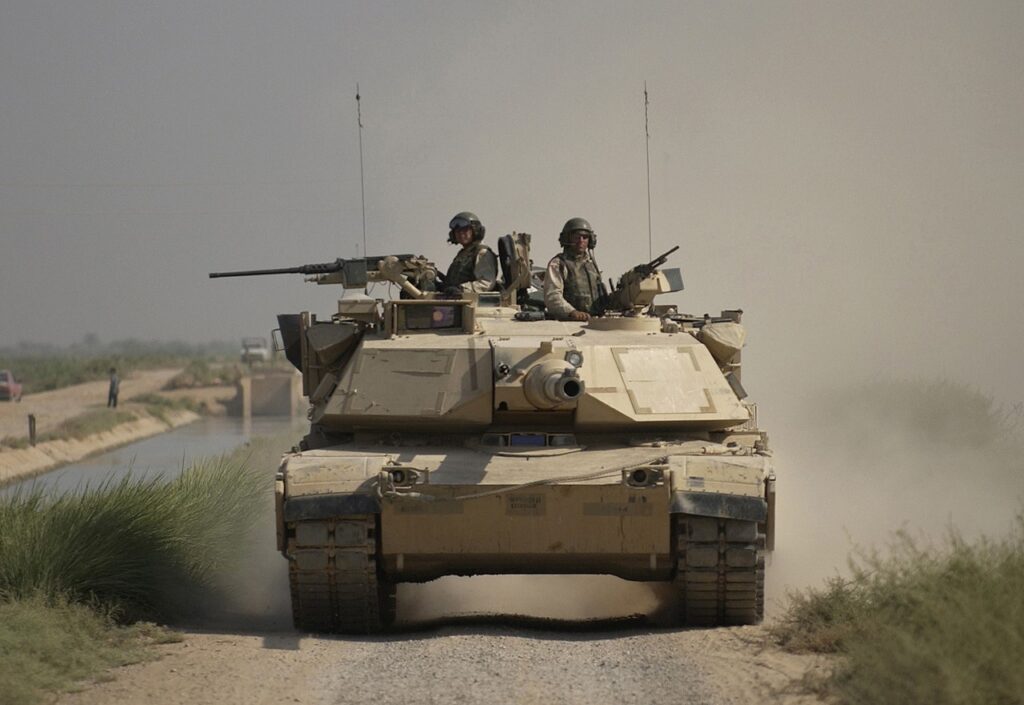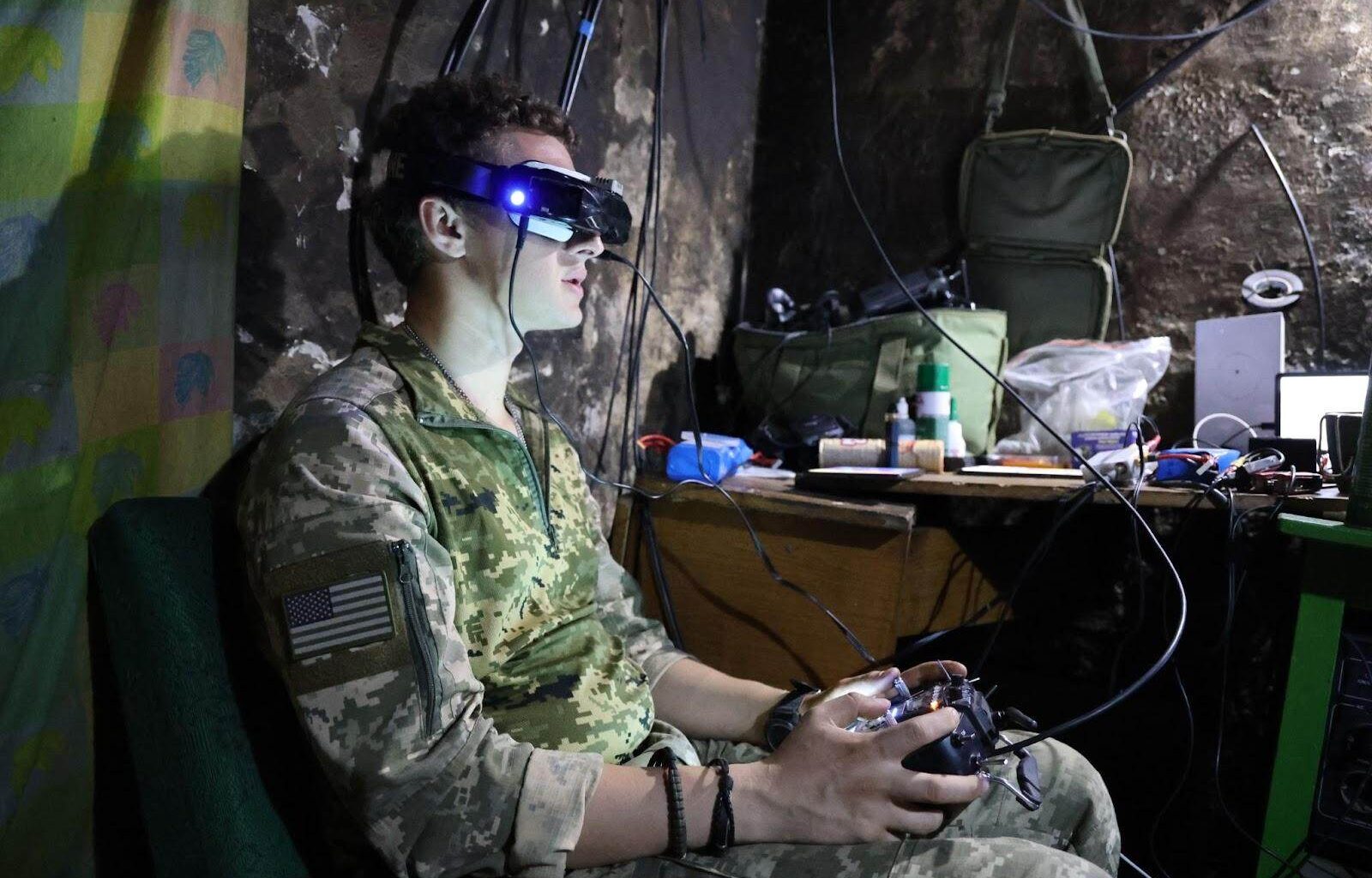The Russia-Ukraine war has shone a spotlight on Ukraine’s extraordinary ability to hold its own against a far stronger opponent, flipping the script on how modern conflicts are fought.
While fundamental aspects of war—such as industrial capacity and firepower for prolonged battles—remain essential, the war has sparked a rethinking of many long-held military doctrines. Ukraine has become a proving ground for cutting-edge weapons and technologies, offering critical insights into their effectiveness in practice.
At the same time, Ukraine has revealed novel ways to counterbalance a stronger opponent by combining domestic resourcefulness with international support. By tapping into its creativity and drawing on help from allies, it has managed to level the playing field despite being outgunned and outmatched.
This ability to adapt under intense pressure not only rewrites the rules of modern conflict but also sheds light on where the future of warfare might be headed.
The report Military Lessons for NATO from the Russia-Ukraine War: Preparing for the Wars of Tomorrow, authored by David Kirichenko and published by The Henry Jackson Society, delves into critical aspects of what the Russia-Ukraine war reveals about the character and future of modern warfare.
The report highlights the transformative role of emerging weapon capabilities and evolving trends in hybrid warfare and scrutinizes the limitations of Western munitions support in addressing Ukraine’s needs. It offers a strategic analysis of these elements, providing a blueprint for NATO to better prepare for future conflicts based on the lessons of the ongoing war.
Western aid: Ukraine’s biggest leverage and liability
The report highlights that given access to Western resources and the freedom to deploy them as it sees fit, Ukraine has demonstrated both effectiveness and innovation in its use of technology.
One key factor in this success is Western support, which has significantly strengthened Ukraine’s defense and played a crucial role in shaping the effectiveness of its war efforts, particularly in the early stages of the full-scale invasion.
However, rather than providing the necessary munitions in a decisive manner, Western supplies have arrived in a piecemeal, drip-feed fashion.
This cautious approach to aid delivery has had profound consequences on the battlefield. Events such as Ukraine’s failed 2023 counteroffensive, the loss of Avdiivka, and the depletion of ammunition supplies can all be directly linked to Western hesitancy.
The report highlights that, at times, Russia’s artillery ammunition has outgunned Ukrainian forces at a rate of 10 to 1. Kirichenko asserts that this Western strategy has “kept Ukraine alive but refused to let it win.” Instead, the slow pace of Western weapons deliveries has forced Ukraine to rely on innovation to counter Russia’s larger supply of munitions and manpower.

Drones and artificial intelligence (AI) innovations
Drones have emerged as one of the key innovations in Ukraine’s defense strategy. As Kirichenko notes, “Not only are drones transforming battlefield operations, but they are changing other areas of warfare.” These inexpensive and versatile tools have allowed Ukrainian forces to compensate for their smaller numbers and lack of heavy weaponry.
Ukraine’s creative use of drones spans both airborne and naval variants, which have been employed to disrupt Russian supply lines and target high-value assets, such as ammunition depots, oil refineries, and even Russia’s navy in the Black Sea—an impressive feat for a country without a navy.
Artificial Intelligence (AI) has also become a pivotal factor in the conflict. AI is enhancing drone targeting capabilities and automating reconnaissance missions. Companies like BRAVE1, a defense tech innovator backed by the Ukrainian government, predict that integrating AI into first-person view (FPV) drones will increase strike precision from a hit rate of 30-50% to 80%.
Kirichenko explains how Ukraine’s integration of AI and drone technology has not only sharpened precision but has also triggered an “AI drone arms race on the battlefield,” taking the fight to a whole new level.

Rallying social media against Russia’s hybrid warfare
Given the complexities of the Kremlin’s strategy, Ukraine has been forced to adopt unconventional tactics to counter Russian aggression globally. Hybrid warfare, including disinformation campaigns and cyberattacks, has become a cornerstone of Russia’s approach to undermining the West.
In response, Ukraine has leveraged both centralized security efforts and grassroots initiatives. The North Atlantic Fella Organization (NAFO) and Ukraine’s IT volunteer army have played a crucial role in pushing back against Russia’s information war, disrupting its narrative and countering its digital offensive.
NAFO, for example, famously sparred with former Trump administration official Elbridge Colby and Russian diplomat Mikhail Ulyanov, even forcing Ulyanov off the social media platform X for weeks.
These organizations have shown that civilians “can effectively support battlefield operations” and have paved the way for using volunteers in unconventional roles—conducting cyber operations, spreading counter-propaganda, and even crowdfunding military equipment.

Expanding the anti-Russian front into Africa
Kirichenko highlights that Ukraine’s defense efforts have extended beyond its borders, strategically targeting Russian interests in Africa and the Middle East. This approach aims to disrupt Russia’s influence and the resources it uses to support its war effort, underscoring how modern warfare is no longer confined to localized conflicts but deeply entwined with global power struggles and geopolitical strategies.
The Sudanese civil war exemplifies the broader geopolitical implications of the Russo-Ukrainian war. Russia has maintained an active presence in Sudan, channeling billions of dollars in gold to sustain its economy while providing training to the Rapid Support Forces (RSF), a paramilitary group founded by former President Omar al-Bashir.
In response, Ukraine has countered Russian influence by conducting drone strikes against the RSF and supporting Sudanese government forces through training programs. Kirichenko argues that sharing Western intelligence and resources with Ukraine is critical, as it “serves the broader strategic interests of the West by curbing Russian influence globally.”
Western weapons: high expectations, mixed results
Despite significant technological and tactical advancements, some Western weapons have underperformed on the battlefield. For instance, the much-anticipated M1A1 Abrams tanks, initially seen as potential game-changers, have proven vulnerable to drone attacks, leading to their withdrawal from the frontlines.
Similarly, Western-made drones have fallen short compared to their Chinese and Ukrainian counterparts. Kirichenko notes that Western drones often cost “three to five times as much for similar specifications” and are plagued by issues such as being “expensive, glitchy, and hard to repair,” which has rendered many of them “unusable.” This has driven a preference for more affordable and reliable alternatives produced in China and Ukraine.

Conclusions for the future of warfare
Kirichenko illustrates that, despite the slow and sometimes ineffective nature of Western support, Ukraine has persevered through technological innovation and creative battle tactics. The nation’s ability to adapt and craft effective solutions under challenging conditions provides crucial lessons for NATO.
However, Ukraine’s dependence on limited stockpiles of munitions does not need to remain the status quo. Kirichenko urges NATO allies to not only accelerate the delivery of Western arms but also allow Ukraine to strike targets within Russia and relocate weapon production and repair facilities to Ukrainian territory.
“It is not enough for the West to simply pledge ammunition and weapons to Ukraine; it must provide everything Ukraine needs to secure victory on the battlefield. Failing to do so risks the outbreak of a far larger and more devastating war on European soil if Ukraine is defeated,” Kirichenko warns.
Read also:
• Can Ukraine win? Former Defense Minister Zagorodnyuk explains
• Leaked intel, late aid deliveries: RUSI report exposes flaws in Ukraine’s 2023 counteroffensive
• Does Russia face military collapse by 2026? Inside Ukraine’s strategic assessment


